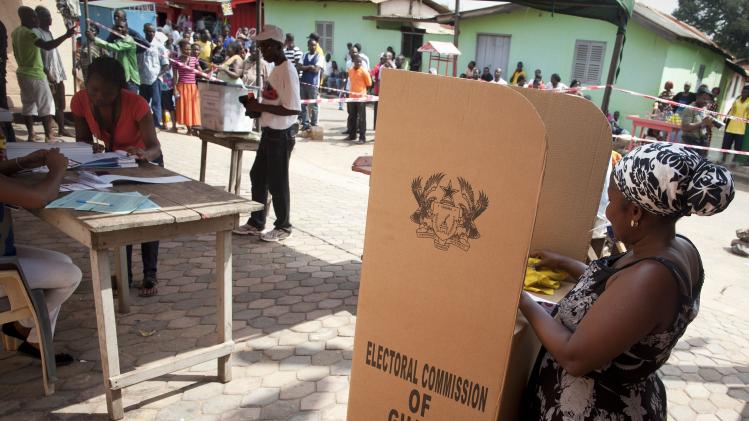Bright Simons is smearing the name of GNPC with false misrepresentation – Prof Hinson

• Professor Robert Ebo Hinson has taken on Bright Simons of IMANI Africa
• He is of the view that Simons has been smearing the name of GNPC
• Prof Hinson said, Simons, has no true facts to start a campaign against GNPC regarding the increase of oil blocks
Professor Robert Ebo Hinson, a lecturer at the University of Ghana Business School, has taken a swipe at Bright Simons, the Vice President of IMANI Africa in his campaign against the move by GNPC to increase the stake in Ghana’s oil blocks.
According to him, Simons is smearing the name of GNPC without having full possession of some “true facts” in making arguments regarding GNPC’s significant increase in Ghana’s ownership in offshore oil blocks.
He argues that, Simons has taken umbrage at the move by GNPC and has communicated his misgivings in a multiplicity of articles.
Prof Hinson, has taken his time in an article copied to GhanaWeb dubbed: “The true facts about GNPC’s increased stake in Aker Blocks CSOs do not want you to know” to academically present some misrepresentations in some of the positions held by Bright Simons and has provided counter-facts on the said misrepresentations he has made.
Prof Ebo Hinson explained, “there are serious challenges with some recent assertions Mr. Simons has made regarding the GNPC’s move to ultimately put Ghanaians in complete control of the nations oil resources. It would seem that Mr. Simons is either not in full possession of some of these true facts he uses in constructing some of his arguments and therefore in making some of the arguments he makes, ends up smearing the name of the GNPC.
“GNPC by the way, is an institution that was voted by the Natural Resource Governance Institute as the best governed National Oil Company in Sub-Saharan Africa. Indeed, in the recent ENI – Springfield unitization, Mr. Simons also seemed to once again make GNPC the villain in another article.”
He, then, points out nine misrepresentations by Bright Simons he perceives in relation to GNPC’s latest move to increase ownership in offshore oil blocks and offer some counter-facts to some of those assertions.
Prof Robert Ebo Hinson wrote:
1 “Most analysts nowadays use a US$ 50 per barrel oil price”. FALSE.
Mr. Simons makes this categorical statement without listing any of the analysts he refers to. These are easily verifiable figures which should have been checked before they were published. The long term price forecast by various anlaysts (all in US$ per barrel) are:
Morgan Stanley – 60
Credit Suisse – 60
RBC – 67
Commerzbank – 70
CIBC – 63
JP Morgan – 60
Deutsche Bank – 60
UBS – 60
HSBC – 63
IHS – 67
Not a single one uses US$ 50 per barrel. With the current oil price of US$ 72 per barrel, it is pretty far fetched to have a valuation figure of US$ 50 per barrel.
2. Kjell Inge Rokke has a windfall of more than US$ 1 billion. FALSE.
This is false because it ignores the US$ 800 million spent by the Aker owner to add approximately 267 million barrels of oil to the two blocks. Moreover, it is profoundly inconsistent with Mr. Simons’ own claim that, US$ 300 million has been spent on the two blocks. Using Mr. Simons’ own analysis, if the price is set at a maximum of US$ 1.1 billion and US$ 300 million has been spent so far, how can the windfall if at all, be more than US$ 1 billion? This is yet another misrepresentation.
3. Aker and TRG have spent only US$ 300 million. FALSE.
It would seem that Mr. Simons has been skimming through the annual reports of Aker and TRG looking for spendings by Aker Energy and AGM. However, he seems unaware that Aker Energy and AGM have debt and commitments not listed in the annual accounts of their parent companies. Verifiable figures from the GNPC suggests that Aker Energy and AGM have spent between US$ 700 million to US$ 800 million on the blocks.
4. Aker was founded in 2004. FALSE.
Aker was established more than 175 years ago and its history is clearly stated on the Aker website, www.akerasa.com.
5. Lambert Energy had no access to audited reservoir data. FALSE.
Mr. Simons claims that, the independent third party Lambert Energy did not have access to audited reservoir data for the two oil blocks. That is factually incorrect, as third party reservoir data was available in the virtual dataroom used for the valuation. My sources within the civil society space confirm to me that, on a call with Lambert Energy, Mr. Simons said himself that he had not been able to listen fully due to conflicting engagements. On this point, it would seem that Mr. Simons does have a full grasp of the facts, and can therefore not make the categorical claim he makes. His pronouncements do not represent the facts.
6. GNPC will merge the fields. FALSE.
Mr. Simons claims that GNPC is to merge the fields and create an SPV. How can two fields be merged, physically? Again, Mr. Simons makes this postulation to fit his narrative. GNPC is only saying that the joint operator company will be the operator of both fields. The fields and the licenses cannot be merged; that is not possible legally under Ghanaian legislation nor physically unless there is contact between the fields.
7. There are considerable richer discoveries made in Ghana that have not been commercialised, like Wawa and Akasa, and the Erin Energy block. FALSE.
It is unclear why Mr. Simons claims that these fields are richer than Pecan and Nyankom. These fields cannot be described as “richer discoveries” by any stretch of the imagination. According to Woodmac, the Akasa field was downgraded to sub-commercial, the Erin Energy block holds no fields bigger than 40 million barrels and Wawa holds 50 million barrels plus gas. Clearly none of these discoveries are anywhere close to Nyankom and Pecan in Mr. Simons’ chosen world of “richer discoveries”. For the avoidance of doubt, Woodmac lists Nyankom at around 130 million barrels.
8. The commerciality of the fields are broadly unchanged since 2018. FALSE.
Mr. Simons seems to be ignoring the widely published fact that, in 2018, Aker first added 100 million barrels of oil to the Pecan discovery and then in 2019, discovered 167 million barrels of oil in Nyankom. These investments completely improved the commercial viability of the fields. Also, Aker made the cost of developing the Pecan field cheaper, thereby increasing profitability. Aker achieved this by reducing the break-even from US$ 45 per barrel to US$ 30 per barrel in the new development concept.
Prior to the outbreak of COVID-19 which disrupted the global oil and gas supply chain, Aker was ramping up for a Final Investment Decision on the Pecan Field. In line with this, in early 2020, a Letter of Intent had been issued to Yinson for the construction of the FPSO for the Pecan Field development. Also, Fugro had been appointed to perform geophysical and geotechnical survey to optimise the Pecan subsea field layout.
9. The owner of Aker said that, he and his partners would spend US$4.4 billion to produce oil, then changed his mind and settled on $2.5 billion. FALSE.
Low oil prices experienced in 2020 following the outbreak of Covid-19 revealed that the earlier proposed development concept for the Pecan Field worth US$ 4.4 billion with a breakeven price of US$ 45 per barrel was not commercially viable. This necessitated a revision to a phased development concept with a break-even of US$ 30 per barrel making the project more commercially viable.
Source: www.ghanaweb.com






